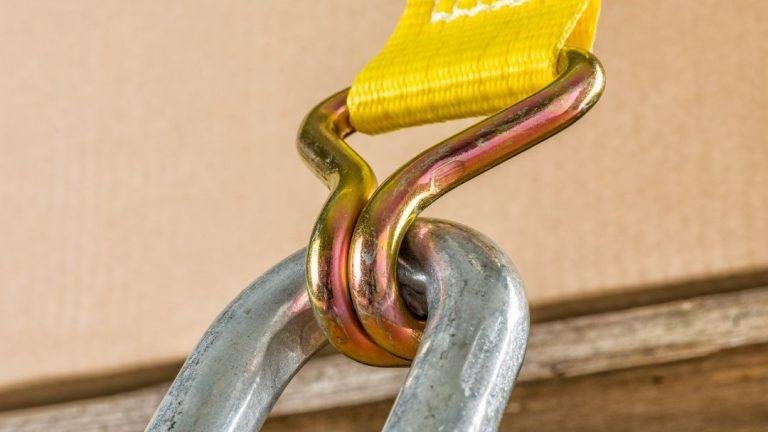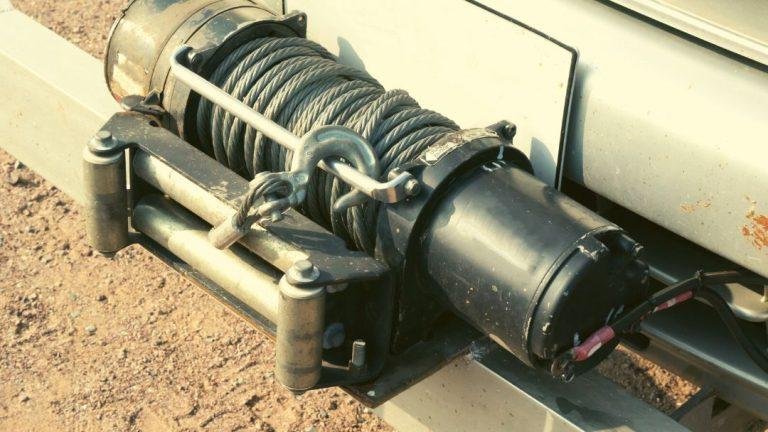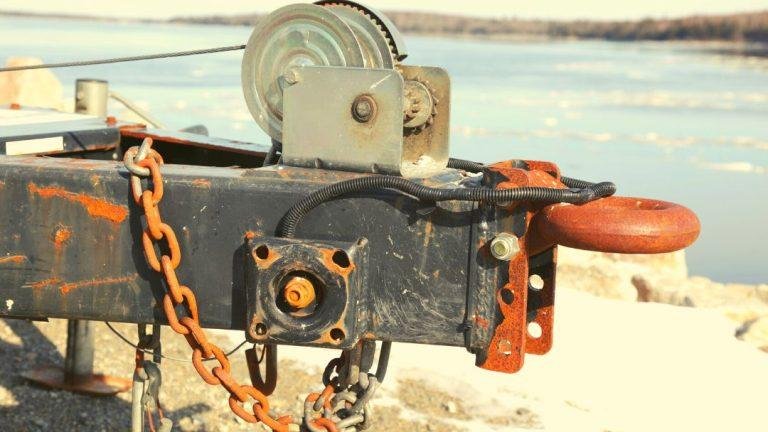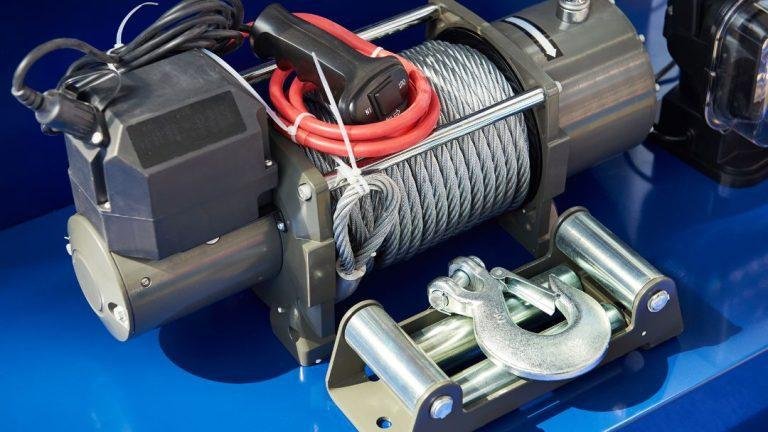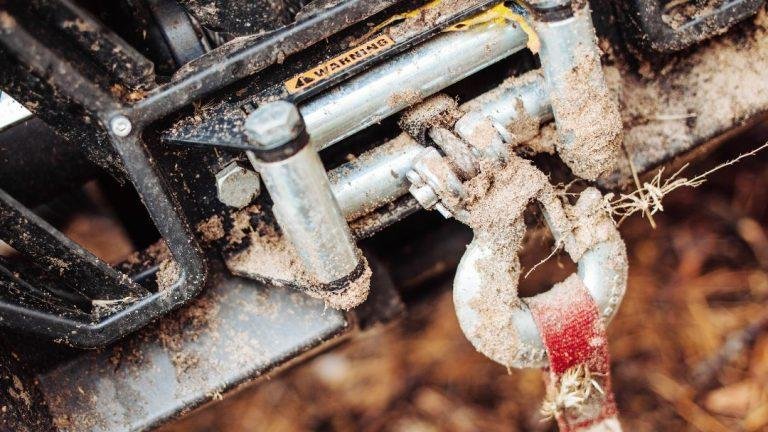To determine the size of the recovery strap you need, consider the weight of your vehicle and add a safety margin. Choose a recovery strap with a breaking strength of at least 2-3 times the weight of your vehicle.
Additionally, consider the expected load on the strap during recovery operations, such as mud or incline, and choose a higher breaking strength if needed. An accurately sized recovery strap will ensure safe and effective recovery of your vehicle. When it comes to vehicle recovery, having the right equipment is crucial.
One essential tool is a recovery strap, which is used to pull a stuck or disabled vehicle to safety. However, selecting the correct size of a recovery strap can be a bit confusing. The size of the recovery strap you need depends on factors such as the weight of your vehicle and the expected load during recovery operations. We will provide an accurate and concise answer to the question of how big of a recovery strap you need. By following our guidelines, you can ensure that you choose a recovery strap that will safely and effectively help you get your vehicle back on track. So let’s get started and find out the right size for your recovery strap.
Understanding Recovery Straps (*)
Choosing the right size recovery strap is crucial for effective vehicle recovery. Consider factors like vehicle weight and the maximum breaking strength of the recovery strap to determine the appropriate size that can handle the task.
What Is A Recovery Strap?
A recovery strap is an essential tool used for vehicle recovery, especially in off-road situations or when a vehicle gets stuck in deep mud, sand, or snow. It is a long and durable strap made of nylon or polyester material, designed to safely tug or pull a vehicle out of a challenging situation.
Recovery straps are commonly used by off-road enthusiasts, tow truck operators, and emergency responders.
How Does A Recovery Strap Work?
When a vehicle becomes immobilized, a recovery strap can help to restore mobility by providing the necessary pulling power. Here’s how it works:
- Recovery straps are designed to stretch and recoil like a rubber band, which helps to absorb and distribute the force exerted during a vehicle recovery.
- The elasticity of the recovery strap stores kinetic energy when it is stretched, allowing the pulling vehicle to generate momentum for a controlled and effective recovery.
- The recovery strap is attached securely to the recovery points or tow hooks on both the stuck vehicle and the pulling vehicle. Once attached, the pulling vehicle slowly accelerates to create tension in the recovery strap, generating the necessary force to pull the stuck vehicle free.
- As the pulling vehicle moves forward, the recovery strap recoils and releases the stored energy, creating a quick and powerful recovery motion that helps to free the immobilized vehicle.
Why Is Choosing The Right Size Important?
Selecting the appropriate size of a recovery strap is crucial for ensuring a safe and successful recovery operation. Here’s why:
- Too small of a recovery strap may not provide enough strength or elasticity to handle the load or absorb the force generated during the recovery process. This can lead to strap failure, vehicle damage, or personal injury.
- On the other hand, using a recovery strap that is too large can be equally problematic. It may not stretch adequately, resulting in a sudden jolt when the recovery strap reaches its maximum tension. This sudden jerking motion can be dangerous and cause damage to the vehicles involved.
Factors to consider when choosing a recovery strap:
When selecting a recovery strap, several factors should be taken into consideration to ensure the right size and strength for your specific needs. Here are some key factors to keep in mind:
- Maximum towing capacity: Check the towing capacity of the recovery strap to ensure it can handle the weight of your vehicle. It is recommended to choose a recovery strap with a towing capacity higher than the weight of the heaviest vehicle you plan to recover.
- Material and construction: Look for recovery straps made of high-quality, durable materials like nylon or polyester. Consider the construction and stitching, ensuring it is strong and resistant to abrasion.
- Width and length: The width and length of the recovery strap will determine its strength and suitability for different applications. A wider and longer recovery strap generally offers higher towing capacity and more versatility.
- Break strength: The break strength of a recovery strap refers to the maximum force it can withstand before breaking. Ensure the recovery strap has a sufficient break strength to handle the potential load exerted during vehicle recovery.
Following these guidelines and selecting the right recovery strap size will help ensure a safe and successful vehicle recovery operation.
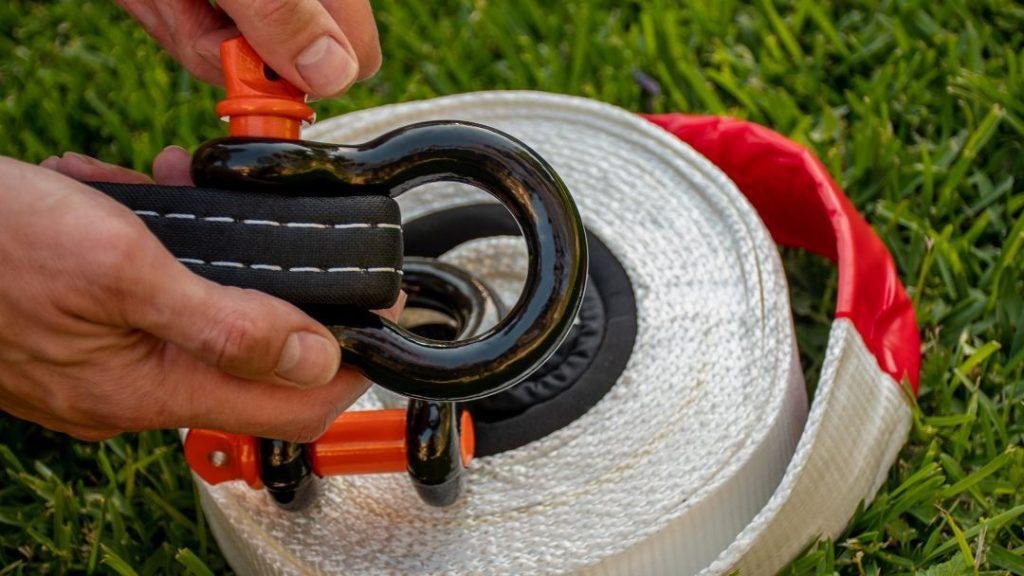
Determining The Correct Length (*)
Choosing the correct length recovery strap is crucial for a successful towing operation. Consider the weight of your vehicle and the pulling capacity of the recovery strap to ensure a secure and effective recovery process.
Length Options Available
Determining the correct length of a recovery strap is crucial for a successful vehicle recovery. The length of the strap can vary depending on several factors, such as the distance between vehicles, the types of vehicles involved, and weight ratings.
By understanding these considerations, you can choose the appropriate length for your recovery strap.
How To Measure The Distance Between Vehicles
To find the optimal length for your recovery strap, it’s essential to measure the distance between the two vehicles involved in the recovery. Here’s a simple step-by-step process to help you obtain an accurate measurement:
- Position the vehicles: Park the vehicles in a straight line, ensuring they are a safe distance apart for the recovery operation.
- Measure the distance: Use a measuring tape or any other suitable measuring tool to determine the exact distance between the front and rear recovery points of the vehicles.
- Account for stretch: Keep in mind that recovery straps have some degree of stretch when under tension. It’s advisable to add a few extra feet to the measured distance to accommodate this stretch.
Considering these measurements will enable you to select a recovery strap with adequate length to connect the vehicles securely.
Considering The Types Of Vehicles Involved
When determining the correct length of a recovery strap, it’s essential to consider the types of vehicles involved. Different vehicle sizes and weights require different strap lengths to ensure a safe and effective recovery. Here are some points to keep in mind:
- Larger vehicles: If you are recovering larger vehicles like trucks or suvs, you will likely need a longer recovery strap to cover the increased distance between their recovery points.
- Smaller vehicles: For smaller vehicles such as sedans or compact cars, a shorter recovery strap may be sufficient due to the smaller distance between their recovery points.
Keeping the size and weight of the vehicles in mind will help you select an appropriate recovery strap length that matches their specific requirements.
Weight Ratings And Capacity Considerations
Another crucial aspect to take into account when choosing the correct length of a recovery strap is its weight rating and capacity. The weight rating determines the maximum load the strap can handle safely. Here’s what you need to know:
- Match the weight rating: Ensure that the recovery strap has a weight rating that is equal to or higher than the combined weight of the vehicles involved in the recovery. This ensures that the strap can bear the load without risking failure.
- Consider capacity limitations: Some recovery straps have specific capacity limitations due to design or material constraints. Make sure the chosen strap can handle the load you expect to be exerted during the recovery operation.
By considering weight ratings and capacity limitations, you can select a recovery strap of appropriate length and strength to safely recover your vehicles.
Remember, accurately determining the correct length of a recovery strap is essential for a successful recovery operation. By following the measurement guidelines, considering the types of vehicles involved, and accounting for weight ratings and capacity considerations, you can ensure a safe and efficient recovery process.
Selecting The Appropriate Width And Strength (*)
Selecting the appropriate width and strength of a recovery strap is crucial to ensure safety and effectiveness. Understanding the weight and size of the vehicles involved will help determine the ideal recovery strap for a successful recovery operation.
Importance Of Width In Recovery Straps
Recovery straps are essential tools when it comes to getting your vehicle out of tough situations. However, selecting the appropriate width and strength of a recovery strap is crucial to ensure a safe and successful recovery. In this section, we will discuss the importance of width in recovery straps and factors to consider when choosing the right width.
- Width is crucial: The width of a recovery strap determines its overall strength, durability, and load-bearing capacity. It plays a significant role in ensuring the effectiveness of the recovery process.
- Weight distribution and load capacity: A wider recovery strap distributes the weight evenly across its surface area, preventing localized stress points and reducing the risk of strap failure. This makes it suitable for heavier vehicles and more challenging recovery operations.
- Increased surface contact: A wider strap provides greater surface contact with the stuck vehicle, allowing for a better grip and minimizing the chance of slippage during the recovery process.
- Compatibility with recovery points: Depending on your vehicle’s recovery points or the attachment points on other vehicles, you may need a specific width to ensure a secure connection. Always check the manufacturer’s guidelines for compatibility before making a selection.
Factors To Consider When Choosing The Width
When selecting the width of your recovery strap, it is essential to take various factors into account to ensure a successful and safe recovery operation. Consider the following:
- Vehicle weight: The weight of your vehicle is a crucial factor in determining the appropriate width of the recovery strap you need. Heavier vehicles require wider and stronger straps to handle the load appropriately.
- Terrain and conditions: Consider the type of terrain and the conditions you are likely to encounter during recoveries. Off-road recovery operations or challenging terrains may require wider straps to withstand the increased force and stress applied during the retrieval process.
- Usage frequency: If you frequently engage in recovery operations or if you own a recovery service, investing in wider straps is advisable. They can withstand repeated use and provide greater reliability during recoveries.
- Future vehicle plans: If you plan on upgrading to a larger or heavier vehicle in the future, it’s recommended to choose a wider strap that can accommodate the potential increase in weight and pulling force.
Strength Ratings And Their Significance
Strength ratings are another crucial aspect to consider when selecting a recovery strap suitable for your needs. Here are some important points to keep in mind:
- Breaking strength: The breaking strength of a recovery strap refers to the maximum load it can withstand before snapping or breaking. It is crucial to select a strap with a breaking strength that is well above the maximum force you anticipate encountering during recoveries.
- Working load limit (wll): The working load limit indicates the maximum load a recovery strap can handle on a regular basis without experiencing permanent deformation or failure. It is essential to choose a strap with a suitable wll that matches the weight and force requirements of your recovery operations.
- Safety margin: It is always recommended to have a safety margin when choosing a recovery strap. A safety margin ensures that the strap can handle unexpected spikes in force or weight without failure, providing an added layer of safety during recoveries.
Choosing A Recovery Strap Based On Strength Needs
When it comes to choosing a recovery strap based on strength needs, it is vital to determine the specific requirements of your vehicle and recovery operations. Here are some considerations to help you make an informed decision:
- Know your vehicle’s weight: Accurately determine your vehicle’s weight, including any modifications or additional accessories that may affect its overall weight. This information will help you select a recovery strap that can handle the load appropriately.
- Consider the pulling force: Determine the maximum pulling force you anticipate encountering during recoveries based on the terrain, vehicle weight, and recovery scenarios you are likely to encounter. Choose a recovery strap with a breaking strength that exceeds this force to ensure a reliable and safe recovery operation.
- Factor in potential future needs: If you expect your recovery needs to change in the future, such as upgrading to a larger vehicle or venturing into more challenging terrains, it’s wise to invest in a recovery strap with higher strength ratings. This will provide flexibility and ensure that your strap can handle future demands.
Remember, selecting the appropriate width and strength of a recovery strap is crucial for safe and successful recoveries. Take into consideration the factors mentioned above and choose a strap that meets your specific requirements, providing you with peace of mind during your off-road adventures and recovery operations.
Matching The Recovery Strap To Vehicle Weight (*)
Choosing the right recovery strap for your vehicle weight is essential for a successful recovery. Consider the weight of your vehicle to determine the size and strength of the recovery strap you need for a safe and effective recovery.
Identifying The Vehicle Weight Class:
- Light vehicles: These include sedans, compact cars, and small suvs. They typically weigh up to 4,500 pounds.
- Mid-sized vehicles: This category includes larger suvs, pickups, and vans. They usually weigh between 4,500 and 6,000 pounds.
- Heavy vehicles: This class includes trucks, suvs with heavy modifications, and large vans. They can weigh over 6,000 pounds.
How To Determine The Appropriate Recovery Strap Size Based On Vehicle Weight:
- Consider the weight of your vehicle: Knowing the weight of your vehicle is crucial in selecting the right recovery strap. It’s important to find this information in the owner’s manual or by checking the details on the manufacturer’s website.
- Choose a recovery strap with a working load limit (wll) that exceeds your vehicle’s weight: The wll indicates the maximum weight the strap is designed to handle safely. It is typically marked on the strap itself. Ensure that the wll is higher than your vehicle’s weight to prevent strain during recovery operations.
- Select a strap with the appropriate breaking strength: The breaking strength represents the maximum load the strap can withstand before breaking. The breaking strength should be significantly higher than your vehicle’s weight to provide a safety margin.
Understanding The Weight Capacity Of Recovery Straps:
- Working load limit (wll): The wll is the maximum load that a recovery strap is intended to handle under normal working conditions. It is typically indicated by a tag on the strap. Always choose a recovery strap with a wll that exceeds your vehicle’s weight.
- Breaking strength: The breaking strength refers to the maximum load that a recovery strap can sustain before breaking. It is essential to choose a strap with a breaking strength significantly higher than your vehicle’s weight to ensure safety during recovery operations.
- Safety margin: Having a safety margin is crucial when selecting a recovery strap. It provides an extra buffer to handle unexpected forces and potential variations in weight. Make sure to choose a strap with a safety margin to avoid overloading and potential accidents.
Remember, matching the recovery strap to your vehicle weight is vital for a safe and successful recovery operation. By identifying the vehicle weight class, determining the appropriate recovery strap size based on vehicle weight, and understanding the weight capacity of recovery straps, you can make an informed choice that ensures efficient recovery while minimizing risks.
Stay safe on your off-road adventures!
Tips For Finding The Perfect Size Recovery Strap (*)
Finding the perfect size recovery strap involves considering the weight and size of your vehicle. Measure the distance between towing points, and choose a strap that exceeds the weight of your vehicle for safe and effective recovery.
Tips For Finding The Perfect Size Recovery Strap
When it comes to off-roading or any vehicle recovery, having the right equipment is crucial. A recovery strap is a must-have tool for getting unstuck or pulling out a stuck vehicle. But with different sizes available, how do you determine the perfect size recovery strap for your needs?
Here are some tips to help you make the right choice:
Consulting The Manufacturer’S Recommendations:
- Check the manufacturer’s guidelines: One of the best ways to determine the size of the recovery strap you need is to consult the manufacturer’s recommendations. They often provide specifications based on the vehicle weight and intended use. Always follow their guidelines for optimal results.
Seeking Advice From Professionals Or Experienced Users:
- Get advice from experts: If you’re unsure about the size of recovery strap you should use, seeking advice from professionals or experienced off-roaders can be helpful. They can offer insights into their experiences and recommend the ideal size based on the terrain and vehicle weight.
Considering The Type Of Recovery Scenarios:
- Evaluate your typical recovery scenarios: Consider the likely scenarios in which you may need to use the recovery strap. Will you primarily be recovering a smaller vehicle or a larger suv or truck? The size of the vehicle being recovered will play a role in determining the appropriate strap size.
- Assess the terrain: Different terrains require different levels of recovery power. If you often encounter difficult or challenging terrains, you may need a heavier-duty recovery strap. Understanding the terrain you frequently encounter will help you determine the size of the strap required.
Understanding The Limitations Of Recovery Straps:
- Be aware of weight limitations: Recovery straps have weight limitations, and exceeding them can lead to catastrophic failures. Always check the maximum weight your recovery strap can handle and ensure that the strap you choose aligns with the weight of your vehicle.
- Consider elasticity: Recovery straps have an inherent elasticity that allows them to absorb energy during recovery incidents. However, this elasticity also means that they may not provide a constant pulling force. Keep this in mind when selecting the size of your recovery strap.
Remember, finding the perfect size recovery strap is crucial for safe and effective vehicle recoveries. By consulting manufacturer recommendations, seeking advice from experts, considering your typical recovery scenarios, and understanding the limitations of recovery straps, you can confidently choose the ideal strap size for your needs.
Stay safe out there!
Frequently Asked Questions On How Big Of A Recovery Strap Do I Need
What Size Recovery Strap Should I Get?
Choose a recovery strap size based on the weight of your vehicle. Consider the following options: – half-inch straps work well for vehicles up to 5,000 pounds. – three-quarter-inch straps are suitable for vehicles up to 10,000 pounds. – one-inch straps are recommended for vehicles weighing up to 20,000 pounds.
– for heavier vehicles, consider a two-inch strap that can handle weights up to 30,000 pounds. Remember, it’s crucial to choose a recovery strap that matches or exceeds the weight of your vehicle to ensure safe and effective use during recovery situations.
How Do I Select The Right Size Recovery Strap To Use For My Vehicle?
To select the right size recovery strap for your vehicle, you need to consider the weight of your vehicle. The strap should be capable of handling at least three times the weight of your vehicle to ensure safety and effectiveness.
To determine the weight of your vehicle, consult the owner’s manual or check the manufacturer’s specifications. Once you have the weight, multiply it by three to find the minimum breaking strength required for the recovery strap. For example, if your vehicle weighs 3,000 pounds, you will need a recovery strap with a minimum breaking strength of 9,000 pounds.
It’s always better to choose a recovery strap with a higher breaking strength if you are unsure about the weight of your vehicle or anticipate heavier loads in the future. Remember to carefully review the specifications and ratings provided by the manufacturer to ensure you select the appropriate size recovery strap for your vehicle.
How Strong Should Your Recovery Strap Be?
Your recovery strap should be strong enough to handle the weight of your vehicle and the conditions of the recovery. The strength of the strap is measured by its working load limit (wll). The wll should be at least two times the weight of your vehicle.
For example, if your vehicle weighs 5,000 pounds, the wll of the recovery strap should be 10,000 pounds. Choosing a recovery strap with a higher wll than necessary provides an extra safety margin. It’s also important to consider the conditions in which you will be using the strap.
If you anticipate heavy off-road recoveries or extreme conditions, a higher strength recovery strap may be required. Always consult the manufacturer’s specifications and guidelines to ensure you are selecting the appropriate recovery strap for your specific needs. Remember, using the wrong strength strap can pose a safety risk and damage your vehicle or equipment.
What Is The Best Length For Kinetic Recovery Rope?
The best length for a kinetic recovery rope depends on the weight of the vehicle being towed. Generally, a 30-foot long rope is suitable for smaller vehicles like cars and smaller trucks. For larger vehicles like suvs and larger trucks, a 40-foot rope may be more appropriate.
It is important to choose a rope that is long enough to provide sufficient slack, but not too long that it becomes difficult to handle. Keep in mind that the rope should have a breaking strength that is at least three times the weight of the vehicle being recovered.
This ensures that the rope can withstand the necessary force without breaking. Ultimately, the best length for a kinetic recovery rope will be determined by the specific requirements of the situation at hand.
Conclusion
To ensure a successful recovery when you find yourself stuck, having the right-sized recovery strap is crucial. A recovery strap with a higher capacity will be able to handle heavier vehicles or more challenging recovery situations. Conversely, a smaller recovery strap may not hold up under excessive weight or extreme conditions.
By properly matching the recovery strap size to your vehicle’s weight and the demands of the recovery, you can enhance safety and effectiveness. It’s important to consider not only the weight of your vehicle but also any additional accessories, cargo, or modifications that may impact the overall weight.
Don’t forget to check the manufacturer’s guidelines and recommendations as well. Ultimately, investing in a recovery strap that matches your vehicle’s weight will provide peace of mind and ensure you’re prepared for any off-roading adventures or unexpected situations that may arise.


